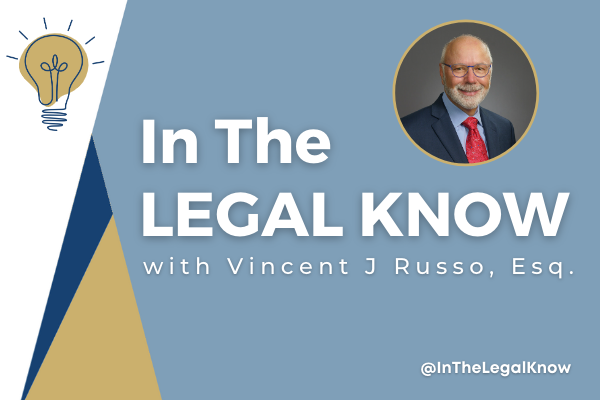Palliative care and hospice care can provide comfort to seriously ill patients and patients who…
Spousal Rights – FAQs
1. What is the Spousal Transfer Exception? When applying for Medicaid Nursing Home Care, there is no transfer penalty for any asset transfers between spouses. The Medicaid Applicant Spouse will not be denied Medicaid benefits as a result of any asset transfers to his/her spouse/Community Spouse. However, if the Community Spouse then transfers the assets to a third- party during the look- back period, the transfer will be considered a non- exempt transfer by the Medicaid Applicant Spouse for Medicaid Nursing Home Care eligibility.
2. What are Spousal Allowances? When applying for Medicaid in New York State, the Community Spouse is allowed to retain a certain level of resources (assets) and monthly income. As of January 1, 2013, the Community Spouse Resource Allowance (CSRA) is a minimum of $74,820 and a maximum of $115,920 (excluding the residence), depending on the combined value of the assets of both spouses. As of January 1, 2013, the Community Spouse’s monthly income allowance known as the Maximum Monthly Maintenance Needs Allowance (MMMNA) is $2,898. If the Community Spouse has less than $2,898 in monthly income, then the Community Spouse is entitled to a contribution from the monthly income of the Medicaid Applicant Spouse in order to reach the maximum monthly income allowance.
3. What is Spousal Refusal? The law allows a Community Spouse to refuse to contribute excess resources (assets) and/or income to the Medicaid Applicant Spouse. This is known as Spousal Refusal.
The resources (assets) and income of the Community Spouse in excess of the Spousal Allowances will be deemed available to the Medicaid Applicant Spouse. If the Community Spouse has greater resources (assets) and excess monthly income, the Community Spouse must file a Spousal Refusal in order to prevent a Medicaid denial.
Upon the filing of a Spousal Refusal, the excess resources (assets) and/or income will not be deemed available to the Medicaid Applicant Spouse. However, a Spousal Refusal may subject the Community Spouse to being sued by the Department of Social Services for spousal support.
4. What is the Spousal Right of Election? The surviving spouse of a New York decedent dying on or after September 1, 1992, has a personal Right of Election to the greater of $50,000, or one-third of the decedent’s net estate, calculated as of the decedent’s date of death. This is known as the Elective Share.
The surviving spouse has the Right of Election unless the right is waived, is not timely asserted or the surviving spouse engaged in disqualifying conduct.
6. What is the time-frame for asserting the Spousal Right of Election? The surviving spouse must assert the Right of Election within six months of the issuance of Letters Testamentary or Letters of Administration appointing an Executor or Administrator.
7. How is the Elective Share calculated? The decedent’s Net Estate is calculated by including all probate assets (passing under a Will) and certain non- probate assets (passing by operation of law), less debts, administration expenses and funeral expenses. Estate taxes are not deducted. These non-probate assets are known as Testamentary Substitutes.
8. What are Testamentary Substitutes? Gifts in contemplation of death, Totten Trust (‘in trust for’ bank accounts), jointly owned property, certain pension, retirement plans, lifetime trusts and contracts are examples of Testamentary Substitutes. Life insurance, however, is not a Testamentary Substitute.
9. What is a Qualified Disclaimer? A Qualified Disclaimer, also known as a Qualified Renunciation, in New York, allows a Surviving Spouse (or other beneficiary) to disclaim property that he/she does not wish to inherit.
The effect of the disclaimer is to treat the disclaiming beneficiary as having predeceased the decedent and therefore, the transfer does not occur and passes to the next beneficiary.
To qualify, the disclaiming beneficiary must not “taint” the asset, by accepting the transfer, and the property must pass without any direction of the disclaiming beneficiary.
10. What is the time-frame for executing a Qualified Disclaimer? The disclaiming beneficiary must file the Qualified Disclaimer documents with the court of proper jurisdiction within nine months from the decedent’s date of death.
11. What are the creditor protection and estate tax benefits of executing a Qualified Disclaimer? A Qualified Disclaimer is retroactive to the decedent’s date of death. Therefore, the disclaiming beneficiary will receive protection from creditors. However, disclaimed assets are deemed available resources for purposes of the disclaiming beneficiary’s Medicaid eligibility.
A Qualified Disclaimer can be used for postmortem estate tax planning by allowing a Surviving Spouse to disclaim assets from the estate of the deceased spouse in order to utilize the unified credit of the deceased spouse.
Note: These answers are informational only, based on New York law and are not to be considered legal advice.




This Post Has 0 Comments